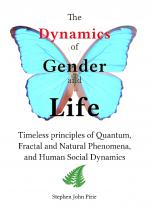Creativity = 4 x competitiveness?
Research confirms that "... a company's choice of where to compete is almost four times more important than out-executing its competitors in its market."1
Why then the primary focus on sales training, and other competitive focuses when a focus on creativity, innovation and potentials would yield far greater growth?
Three key elements of creativity in contemporary business reality:
- Creativity and Innovation is not only crucial to getting “ahead of the pack” but also of simply “keeping up” in an increasingly interconnected, interactive global economy.
- Creativity is an inherent ability within all, and the exercising of ‘creativity’ is central to a sense of value and fulfilment (and thus the productivity) of employees.
- Innovation is a collaborative process that is highly dependent on the top-to-bottom cultural belief-system within an organisation.
Introduction
Research confirms that those companies that lead2 in terms of innovation (e.g. Canon of Japan) have a corporate culture that is creative and innovative from the top down. “It is well documented that (Mr Jujio Mitarai, Chairman Canon) sees things in an imaginative way that goes beyond the conventional wisdom.”3
Accordingly, to enhance creativity and innovation within an organisation requires concerted awareness of the influence that the corporate culture (belief-system) has upon the ability of individuals and teams to be creative, and on their ability to convert creative ideas into effective and innovative products and services.
- 1. Mehrdad Baghai & Angus Dawson, The Growth Challenge, AFR Boss Magazine, Feb. 08 Edition, John Fairfax Publications Pty Ltd, Sydney, page 26.
- 2. Canon was chosen number one in innovative success in 2004 and 2005 by the Japanese newspaper Nihon Keizan Shinbun (among a list of the top 500 companies every year)
- 3. Fangqi Xu, Tudor Rickards (2007). Creative Management: A Predicted Development from Research into Creativity and Management, Creativity and Innovation Management 16 (3), 216–228. doi:10.1111/j.1467-8691.2007.00445.x
 "The Dynamics of Gender and Life" ebook is now available at
"The Dynamics of Gender and Life" ebook is now available at